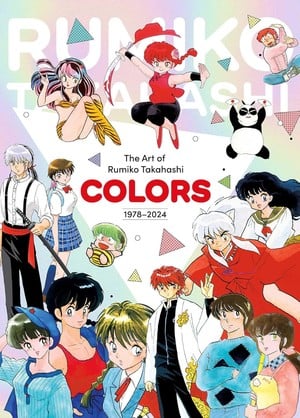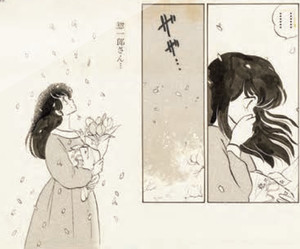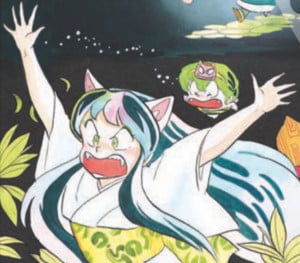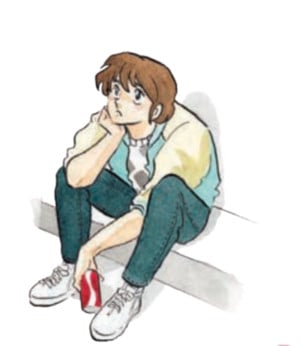The Fall 2025 Manga Guide
Colors: The Art of Rumiko Takahashi 1978-2024
What's It About?

For over forty-five years, Rumiko Takahashi has thrilled readers with her versatile storytelling in such works as Urusei Yatsura, Maison Ikkoku, Ranma ½, Inu Yasha, RIN-NE, and Mao. This deluxe art book is presented in its original right-to-left format and shows off Takahashi's original drawings in gorgeous detail, highlighting the original colors and typesetting.
This book features commentary, anecdotes, and a long-form interview with Takahashi in which she provides readers with insight into her process. Also included are a ribbon bookmark, an exclusive drawing of Lum from Urusei Yatsura showing each phase from sketch to final art, and special sections in which Takahashi picks her favorite panels from her series.
Colors: The Art of Rumiko Takahashi 1978-2024 has art by and story by Rumiko Takahashi. English translation is done by Diana Taylor. Published by Viz Media (September 30, 2025).
Is It Worth Reading?
Rebecca Silverman
Rating:

If you're a fan of Rumiko Takahashi, stop reading this and go buy the book. Seriously. This is a must-have – a gorgeous hardcover that opens with a color cell of Lum going backwards to Takahashi's original black and white pencil sketch, full of art and comments that really shed light on Takahashi's thoughts and process. It's more insight than I've ever seen into her works before.
The book is chronological, starting with Urusei Yatsura and ending with Mao, Takahashi's current series as of this writing, with volume twenty just released in English. Each section contains drafts (near-final, as far as I can tell), color art, and Takahashi's comments, finishing up with her five favorite panels from each work. The drafts are probably the most interesting piece, because this is where you can really see how the process of creating manga has changed since 1978. Up through Inu Yasha, text is clearly cut out and pasted into each speech bubble – it may be hard to see in the example there, but in the book it's very obvious. Then in RIN-NE, it abruptly shifts to the type being directly on the page. Interestingly enough, in the color art for Mao, it's still possible to see brush marks in the black space, but other parts look digitally colored or touched up. Thus we see an evolution of Takahashi's style in two senses, which is really neat.
Takahashi also discusses some of her struggles with each series as well as her overall philosophy of creating manga. Her main goal, she says several times, is to entertain her readers and not make them uncomfortable. (It's worth noting that none of her Rumic stories, Mermaid's Scar, or One-Pound Gospel are included in the book, and a few of those definitely go against her larger philosophy, which she does acknowledge.) Stories and characters are created organically, and Maison Ikkoku was the only one where she had a clear idea of how she wanted to end the series. Thinking about that and Urusei Yatsura running concurrently is a little mind-bending, but the book makes it easy to see how the two complement each other in some ways; as Takahashi puts it, she wanted Ataru to be someone readers wanted to be like and Godai someone they could see themselves in.
This is a book that makes me want to go back and re-read all of Takahashi's works, even the ones that ultimately felt lesser, like RIN-NE. (Although I initially felt that way about Mao, I've come to really enjoy it.) Takahashi's insights may not be groundbreaking, but they provide context, and the color images are all fun to look at. If you're a fan, you really don't want to pass this up.
Kevin Cormack
Rating:

Reading Rumiko Takahashi's manga was one of the formative components of my adolescence. I devoured every single 32-page floppy, mirror-imaged Ranma ½, Maison Ikokku, Urusei Yatsura, and Inu Yasha issue published by Viz Comics in the 1990s, and still keep them all safely polybagged on a shelf in my attic. That her work remains enduringly popular to this day is a testament to her unequalled skill as a visual storyteller. While her artwork always looks simple, it takes a true master of their craft to communicate such humor and characterization with so few lines. Not only is her artwork both beautiful and instantly recognizable, but with her superhuman work ethic, she's churned out page after page of high-quality, iconic manga weekly for nigh on half a century.
This gorgeous, 400-page artbook is an essential buy for any Takahashi fan, whether a besotted Lum-o-phile, Ranma-holic, or latter-day Mao-lover. What we English-language fans were starved of for so long were Takahashi's frequent full-color pages for her manga. Most of Viz Comics' English-language Takahashi editions continue to be published in grayscale, which is fine for the majority of black-and-white pages, but here in this book are collected hundreds of full-color illustrations, eye-poppingly vibrant. It's exciting to finally be able to see what these familiar pages were really meant to look like.
Covering only Takahashi's most major work, each series is afforded a generous portion of the book, with selections of the author's favorite panels, plus raw images of her original pages for some of each story's most impactful sequences. Many of these are accompanied by Takahashi's endearingly self-deprecating commentary. Appended at the end is a decent-length interview covering artistic and narrative choices from across her entire career. It probably won't surprise anyone to learn that Takahashi is more of a “gardener” than a “planner” in terms of narrative and character development, considering the sheer, meandering length of most of her series.
My only real criticism, apart from a few brief mentions here and there, is the complete absence of Takahashi's shorter series, like the macabre Mermaid Saga (my personal favorite), One-Pound Gospel, and her myriad one-shots and short stories. Many of these demonstrate her incredible ability for concise, effective storytelling that isn't always apparent from seemingly endless monster-length serials like Inu Yasha. I get that this collection is primarily focused on her major series, though, and at 400 pages in length, it's already a formidable tome.
Reading through Colors 1978-2024 for me is like re-living my childhood, but in even brighter, more vivid hues than I remember. It makes me want to break out those old floppy issues, smell that familiar aroma of newsprint and ink, and bury myself in the daft adventures of Takahashi's silly men and eccentric women. It definitely earns its place on my – and any serious Takahashi fan's – coffee table.
Caitlin Moore
Rating:

For fans of a certain generation, the name “Rumiko Takahashi” is almost synonymous with the idea of manga. Takahashi has been drawing manga for over 40 years, and even if her most recent series haven't found the same kind of audience as the older ones, her influence on the industry and on fan tastes cannot be overstated. At the same time, she is famously reclusive, so I wondered what kind of treasures lay within the pages of The Art of Rumiko Takahashi: Colors 1978-2024.
Well… not a whole lot, to be honest. True to the title, much of the book is devoted to displaying the colored versions of pages that had, until this point, only been available in the US in black and white. There are some illustrations, a smattering of production art such as storyboards, and Takahashi's five “favorite panels” from each work, with a description of why she chose them. Maybe it's because I've been a fan for such a long time, but there was little to be found that I hadn't seen before. Well, at least for the series I care about, but RIN-NE and Mao have never really interested me.
If anything, the text is more interesting than the art – unusual for an art book! Takahashi is famously reclusive, so the bits and pieces from her give rare insight into who she is as a person. They're generally not super introspective or reflective, instead stating plainly that when she draws manga, she isn't trying to make a particular statement. Rather, she wants to find the intersection between what she enjoys drawing and what the audience enjoys reading, because what's the point of having one without the other? She's not here to try to make us think, even if some of us can't help ourselves. The interview at the end of the book includes more insight into her process and ideas.
Here I have to admit one of the limitations of the manga guide: while this book is being published as a hardcover with a large trim size, I'm working off a digital version. From where I'm standing, it's hard to justify the US$60 price tag for what's inside, but paging through the physical book is probably much nicer than scrolling on my screen. Either way, this is for diehard fans only.
discuss this in the forum |
back to The Fall 2025 Manga Guide
Feature homepage / archives